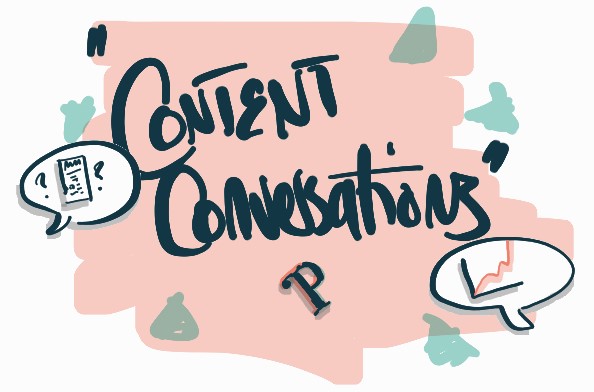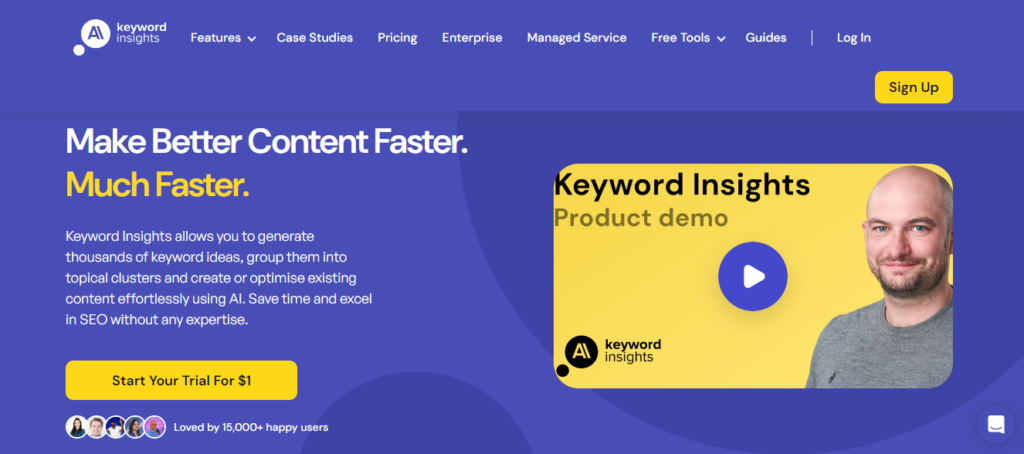Struggling to organize your website’s content effectively? An AI-powered content clustering tool can transform the way you structure your online presence.
They leverage advanced algorithms, which means these content clustering tools can quickly and accurately group your content into relevant clusters, improving site navigation, user experience, and search engine rankings.
In this ultimate guide, I’ll explore the top AI-powered content clustering tools available in 2024, with a special focus on a tool we love, Keyword Insights – the industry leader in AI-driven content organization. Then, I’ll show you exactly how to implement your content clustering strategy for maximum ranking impact.
Discover how these innovative tools can transform your SEO strategy and take your website to new heights. Let’s dig in!
Want all the deets but prefer listening to reading?
No problem, you can listen to the discussion of this blog on our Podcast, Content Conversations. Or, grab a listen right here:
AI-Powered Content Clustering Tools in 2024
- AI-powered content clustering tools streamline the process of organizing website content for better SEO performance
- These tools offer benefits such as increased efficiency, accuracy, and scalability compared to manual methods
- In 2024, several top-performing AI-powered content clustering tools are available to help you optimize your content strategy
Understanding Content Clustering and Its Importance in SEO
Content clustering is the process of grouping website content into thematic clusters based on their relevance to specific topics or keywords. By organizing content in this manner, businesses can create a more structured and user-friendly website architecture, which can lead to improved SEO performance.
When content is properly clustered, search engines can more easily understand the relationships between different pages on a website. This helps search engines determine the relevance and authority of a website for specific search queries, ultimately leading to higher search rankings and increased organic traffic.
Traditional Approaches to Content Clustering
In the past, content clustering was often done manually, with website owners and content creators organizing content based on their own judgment and understanding of the subject matter. While this approach can be effective on a small scale, it becomes increasingly challenging and time-consuming as a website grows in size and complexity. I experienced this first hand.
Manual content clustering is also prone to inconsistencies and human error, which can negatively impact the overall structure and performance of a website. And, manual methods may not always take into account the nuances of keyword relationships and semantic connections, which are crucial factors in modern SEO.
How AI Transforms Content Clustering
AI-powered content clustering tools leverage advanced algorithms and techniques to optimize the way website content is organized and optimized for SEO. These tools rely on machine learning, natural language processing (NLP), and semantic analysis to understand the meaning and context of website content at a deeper level.
Machine Learning and NLP in Content Clustering
Machine learning algorithms enable AI-powered tools to automatically identify patterns and relationships within large volumes of website content. When analyzing factors such as keyword frequency, context, and co-occurrence, these tools can accurately group related content into thematic clusters without the need for manual intervention. Major win, right?
NLP techniques allow AI-powered content clustering tools to understand the meaning and intent behind website content, going beyond simple keyword matching. This enables these tools to identify semantic connections between seemingly unrelated pieces of content, creating more meaningful and comprehensive clusters. So smart.
Advantages of AI-Powered Content Clustering
One of the primary advantages of AI-powered content clustering is the speed and efficiency with which it can be performed. These content clustering tools can analyze and organize vast amounts of content in a fraction of the time it would take to do so manually, saving you significant time and resources.
In addition to that, AI-powered tools offer a higher level of accuracy and consistency in content clustering compared to manual methods. By eliminating human bias and error, these tools ensure that content is grouped based on objective criteria, resulting in a more reliable and effective website structure.
Another key benefit of AI-powered content clustering is scalability. As websites grow and evolve over time, these tools can easily adapt and re-cluster content as needed, ensuring that the website architecture remains optimized for SEO performance. This was really helpful for me when my website grew to the tune of thousands of pages.
Want to dive into some AI-powered content clustering case studies? Don’t worry, I gotchu! Check out these 4 AI-powered content clustering case studies I researched and get your mind blown.
Top AI-Powered Content Clustering Tool: Keyword Insights
Keyword Insights is a powerful AI-driven content clustering tool that helps you group keywords efficiently and effectively. It offers a range of features and benefits to simplify your SEO workflow and boost your content strategy.
Key Features and Benefits
Keyword Insights provides a detailed breakdown of its AI-powered content clustering capabilities. Its unique selling points include:
- Advanced keyword grouping algorithms that save time and effort
- Intuitive and user-friendly interface for easy navigation and analysis
- Comprehensive keyword insights and suggestions for optimizing content
How Keyword Insights Employs Advanced AI Techniques
Keyword Insights uses state-of-the-art AI algorithms and models, such as deep learning and transformer models, to enable accurate and efficient content clustering. These advanced techniques allow the tool to:
- Analyze large volumes of keyword data quickly and accurately
- Identify hidden patterns and relationships between keywords
- Provide actionable insights for content optimization and SEO strategy
Integrating Keyword Insights into Your SEO Workflow
Incorporating Keyword Insights into your SEO workflow is straightforward.
Here’s a step-by-step guide:
- Input your keywords or import them from a file
- Customize clustering settings based on your preferences
- Analyze the generated keyword clusters and insights
- Apply the insights to your content strategy and optimization efforts
Best practices for using Keyword Insights include regularly updating your keyword lists, experimenting with different clustering settings, and using the insights to inform your content creation and optimization decisions.
Pricing and Plans
Keyword Insights offers a range of pricing plans to suit different needs and budgets. The plans include:
- Basic: $58/month – Ideal for small businesses and startups
- Pro: $145/month – Suitable for growing businesses and agencies
- Enterprise: $299/month – Tailored for large organizations with specific requirements
Overview of Content Clustering with Keyword Insights
| Category | Details |
|---|---|
| Key Features and Benefits | |
| Advanced Keyword Grouping Algorithms | Saves time and effort by efficiently grouping keywords. |
| Intuitive and User-Friendly Interface | Provides easy navigation and analysis. |
| Comprehensive Keyword Insights | Offers suggestions for optimizing content based on detailed keyword analysis. |
| How Keyword Insights Employs Advanced AI Techniques | |
| Deep Learning | Analyzes large volumes of keyword data quickly and accurately. |
| Transformer Models | Identifies hidden patterns and relationships between keywords. |
| Natural Language Processing (NLP) | Understands the context and intent behind keywords for accurate clustering. |
| Integrating Keyword Insights into Your SEO Workflow | |
| Input Keywords | Enter your keywords or import them from a file. |
| Customize Clustering Settings | Adjust settings based on your preferences for tailored results. |
| Analyze Clusters | Review the generated keyword clusters and insights. |
| Apply Insights | Implement the insights into your content strategy and optimization efforts. |
| Best Practices | |
| – Regularly update your keyword lists. | |
| – Experiment with different clustering settings. | |
| – Use insights to inform content creation and optimization decisions. | |
| Pricing and Plans | |
| Basic | $58/month – Ideal for small businesses and startups. |
| Pro | $145/month – Suitable for growing businesses and agencies. |
| Enterprise | $299 – Tailored for large organizations with specific requirements. |
| Judging Criteria | |
| User Experience and Interface | Evaluates how easy and intuitive the tool is to use. |
| AI Tech and Customization | Assesses the sophistication and flexibility of the AI algorithms. |
| Accuracy and Error Rate | Measures the precision and reliability of the clustering results. |
| Cost Comparison | Compares the pricing relative to the features and benefits offered. |
| Customer Support | Reviews the quality and availability of customer support services. |
Alternative AI-Powered Content Clustering Tools
While Keyword Insights offers a comprehensive solution for AI-powered content clustering, it’s worth exploring other tools in the market. In this section, I’ll compare three alternative tools I’ve tried: Ahrefs, SEMrush, and Keyword Cupid. I’ll provide an overview of each tool, discuss their key features, and weigh their pros and cons.
Alternative 1: Ahrefs
Ahrefs is a well-known SEO tool that offers content clustering capabilities. It uses machine learning algorithms to group keywords based on their semantic relevance and search intent.
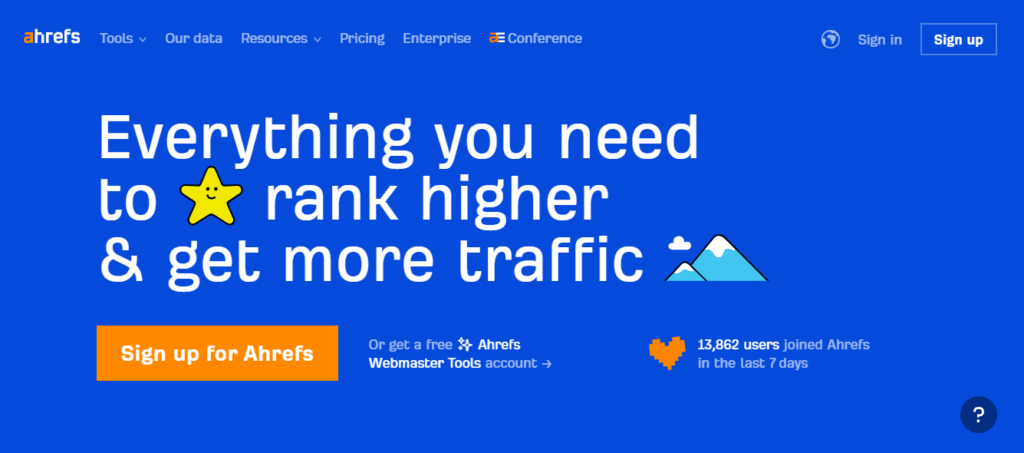
| Feature | Description |
|---|---|
| Keyword Grouping | Groups keywords based on semantic relevance and search intent |
| Content Gap Analysis | Identifies content gaps and opportunities for new content |
| Competitive Analysis | Analyzes competitors’ content clusters and strategies |
Pros:
- Comprehensive SEO toolkit
- Large keyword database
- User-friendly interface
Cons:
- Higher pricing compared to some alternatives
- Limited customization options for clustering
Pricing: Ahrefs offers plans starting at $129 per month, with higher-tier plans providing additional features and resources.
Learn more about why SEO experts use Ahrefs for keyword research by reading the blog – Why SEO Experts Use Ahrefs for Keyword Research: A Decade of Data
Alternative 2: SEMrush
SEMrush is another popular SEO and content marketing platform that includes content clustering functionality. It uses natural language processing (NLP) to analyze and group keywords based on their semantic relationships.
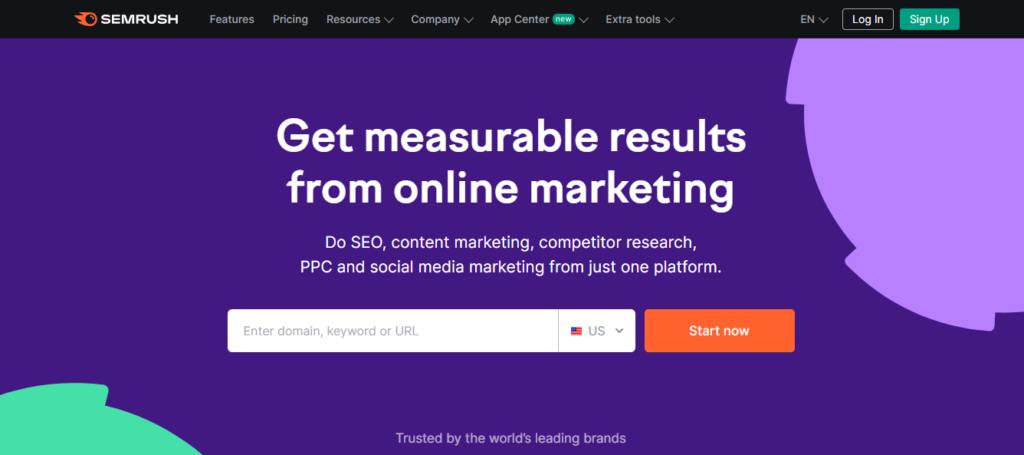
| Feature | Description |
|---|---|
| Topic Research | Identifies relevant topics and subtopics for content creation |
| Keyword Magic Tool | Groups keywords by semantic relevance and provides keyword metrics |
| Content Template | Generates optimized content briefs based on target keywords |
Pros:
- Extensive feature set for SEO and content marketing
- Integration with Google Docs for content optimization
- Competitive pricing
Cons:
- Steeper learning curve compared to some alternatives
- Some features may be overwhelming for beginners
Pricing: SEMrush offers plans starting at $129.95 per month, with higher-tier plans unlocking additional features and limits.
Learn more about how to do keyword research using Semrush by reading our blog – 2024’s Ultimate Guide to Keyword Research Using Semrush
Alternative 3: Keyword Cupid
Keyword Cupid is a specialized tool for keyword clustering and content optimization. It uses AI algorithms to group keywords and provide content recommendations.
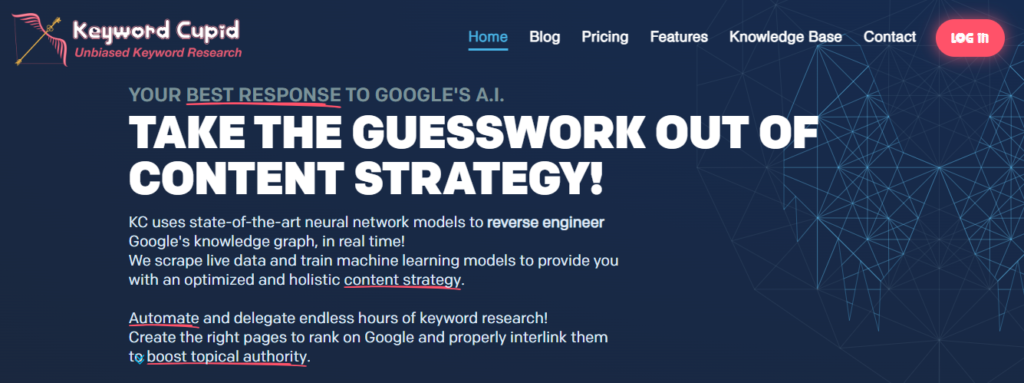
| Feature | Description |
|---|---|
| Keyword Clustering | Groups keywords into semantically related clusters |
| Content Optimization | Provides optimization suggestions based on target keywords |
| Keyword Research | Identifies relevant keywords and provides metrics like search volume and difficulty |
Pros:
- Specialized focus on keyword clustering and content optimization
- Intuitive interface
- Affordable pricing
Cons:
- Limited feature set compared to comprehensive SEO tools
- Smaller keyword database than some alternatives
Pricing: Keyword Cupid offers plans starting at $49 per month, making it an affordable option for businesses and individuals.
Learn more about how to choose the right keywords by reading the blog – How to Choose the Right Keywords for SEO: A Comprehensive Guide for 2024
Keyword Insights vs. Alternatives
| Feature/Criteria | Keyword Insights | Ahrefs | SEMrush | Keyword Cupid |
|---|---|---|---|---|
| Pricing Starts at | $58/month (Basic), | $129/month (Starter) | $129.95/month (Pro) | $9.99/month (Starter) |
| Key Features | Advanced keyword grouping, intuitive interface, comprehensive insights | Keyword grouping, content gap analysis, competitive analysis | Topic research, keyword magic tool, content template | Keyword clustering, content optimization, keyword research |
| Pros | High accuracy, user-friendly, scalable | Comprehensive SEO toolkit, large keyword database | Extensive feature set, integration with Google Docs | Specialized focus, intuitive interface, affordable |
| Cons | Can’t find any | Higher pricing, limited customization | Steeper learning curve, potentially overwhelming features | Limited feature set, smaller keyword database |
| User Experience | High | High | Medium | High |
| AI Tech and Customization | Advanced AI, deep learning, transformer models | Machine learning algorithms | Natural language processing (NLP) | AI algorithms for clustering |
| Accuracy and Error Rate | High accuracy, low error rate | High accuracy | High accuracy | High accuracy |
| Custom Support | Comprehensive support | Comprehensive support | Comprehensive support | Comprehensive support |
Best Value Plan
For Small Businesses and Startups:
- Keyword Insights Basic ($58/month): This plan offers robust keyword clustering and insights at an affordable price, ideal for small businesses and startups.
For Growing Businesses and Agencies:
- Keyword Insights Professional ($145/month): Offers advanced features that are suitable for growing businesses and agencies, with a balance between cost and capabilities.
- Keyword Cupid Freelancer ($49/month): Also provides good value for those needing specialized keyword clustering and content optimization.
For Comprehensive SEO Needs:
- Ahrefs Starter ($129/month): Provides a broad range of SEO tools, making it a great choice for those who need more than just keyword clustering.
- SEMrush Pro ($129.95/month): Offers extensive SEO and content marketing features, suitable for businesses looking for an all-in-one solution.
Based on the balance of pricing and features, Keyword Insights Pro ($145/month) offers the best value for most users, providing advanced AI-powered content clustering capabilities at a competitive price. For those needing a more comprehensive SEO toolkit, Ahrefs Starter ($129/month) and SEMrush Pro ($129.95/month) are excellent choices despite their higher costs.
Winner: Keyword Insights
After evaluating the alternative tools, I believe that Keyword Insights still stands out as the winner for AI-powered content clustering. Its advanced AI algorithms, comprehensive feature set, and user-friendly interface make it the top choice for businesses looking to optimize their content strategy.
While tools like Ahrefs and SEMrush offer robust SEO capabilities, Keyword Insights’ specialized focus on content clustering and its seamless integration with content creation workflows give it a significant advantage.
Understanding the Fundamentals of Content Clustering
TL;DR:
- Content clustering groups similar content pieces together based on themes, topics, or semantics
- Keywords play a crucial role in identifying and grouping relevant content
- AI-powered content clustering leverages semantic analysis and NLP for accurate and efficient clustering
What is Content Clustering?
Content clustering is the process of organizing and grouping similar pieces of content together based on their themes, topics, or semantic meaning. The primary goal of content clustering is to create a structured and organized content library that is easy to navigate and understand for both users and search engines.
There are three main types of content clustering:
- Thematic clustering: Groups content based on overarching themes or ideas
- Semantic clustering: Groups content based on the meaning and context of the words used
- Topical clustering: Groups content based on specific topics or subtopics
Content clustering is essential for improving SEO and user experience. By grouping similar content together, search engines can better understand the context and relevance of each piece, leading to higher rankings and more targeted traffic. Additionally, users can easily find the information they need, leading to increased engagement and satisfaction.
The Role of Keywords in Content Clustering
Keywords are the foundation of content clustering. By identifying and targeting relevant keywords, content creators can ensure that their content is properly grouped and optimized for search engines and users.
Keyword research involves identifying the words and phrases that users are searching for related to a particular topic. This can be done using tools like google keyword planner, SEMrush, or Ahrefs. Once relevant keywords are identified, they can be grouped together based on their semantic meaning or topical relevance.
Effective keyword grouping strategies include:
- Grouping keywords by intent (informational, navigational, transactional)
- Grouping keywords by topic or subtopic
- Grouping keywords by semantic meaning or context
By implementing these strategies, content creators can ensure that their content is properly clustered and optimized for both search engines and users.
Semantic Analysis and Natural Language Processing in Content Clustering
Semantic analysis and natural language processing (NLP) are two powerful tools that are used in AI-powered content clustering. These technologies allow machines to understand the meaning and context of human language, making it possible to accurately group and organize content based on its semantic meaning.
Semantic analysis involves analyzing the relationships between words and phrases to determine their meaning and context. This allows machines to understand the underlying themes and topics of a piece of content, even if specific keywords are not used.
NLP, on the other hand, involves processing and analyzing human language to extract meaning and insights. This includes tasks like sentiment analysis, named entity recognition, and part-of-speech tagging.
When combined, semantic analysis and NLP can significantly improve the accuracy and efficiency of content clustering. By understanding the meaning and context of each piece of content, machines can quickly and accurately group similar pieces together, even if they use different keywords or phrases.
As an example, imagine a content library containing articles about various types of cars. Using semantic analysis and NLP, an AI-powered content clustering tool could accurately group articles about electric cars together, even if they use different keywords like “EV,” “battery-powered,” or “zero-emission.”
Best Practices for Implementing AI-Powered Content Clustering
- Optimize your content strategy by integrating AI-powered content clustering
- Create targeted content that aligns with clustered topics to boost SEO and user engagement
- Continuously monitor and refine your content clustering approach for the best results
Integrating Content Clustering into Your Content Strategy
Incorporating AI-powered content clustering into your overall content strategy is crucial for success. By aligning your content plan with clustered topics, you can create a cohesive and targeted approach that resonates with your audience.
To get started, map out your existing content and identify the main themes and topics. Use the insights gained from AI-powered content clustering to refine these themes and create a structured content plan. Ensure that each piece of content fits into a specific cluster and contributes to the overall narrative.
Measuring the impact of content clustering on SEO and user engagement is essential. Track key metrics such as organic traffic, bounce rates, and time spent on page to gauge the effectiveness of your clustered content. Use these insights to continually optimize your content strategy and make data-driven decisions.
Optimizing Content for Clustered Topics
Creating content that aligns with clustered topics is key to maximizing the benefits of AI-powered content clustering. Begin by thoroughly researching the topics within each cluster and identifying the main keywords and phrases. Use these insights to inform your content creation process and ensure that each piece of content is optimized for the target cluster.
When creating content, focus on providing in-depth, comprehensive coverage of the topic. Use a mix of long-form blog posts, articles, and multimedia content to engage your audience and provide value. Aim to create content that answers common questions and addresses pain points related to the topic.
In addition to creating new content, use content clustering insights to identify gaps and opportunities in your existing content. Update and optimize older pieces of content to align with the clustered topics and improve their relevance and search rankings.
Monitoring and Refining Your Content Clustering Approach
Implementing AI-powered content clustering is not a one-time task, but rather an ongoing process. Regularly review and update your content clusters to ensure they remain relevant and accurate. As new topics and trends emerge, adjust your clusters accordingly and create new content to address these changes.
To evaluate the effectiveness of your content clustering approach, track key performance metrics such as organic traffic, engagement rates, and conversion rates. Use these insights to identify areas for improvement and make data-driven decisions about your content strategy.
| Metric | Importance |
|---|---|
| Organic traffic | Measures the visibility and reach of your clustered content in search engines |
| Engagement rates | Indicates how well your content resonates with your audience and keeps them interested |
| Conversion rates | Shows the effectiveness of your content in driving desired actions, such as sign-ups or purchases |
Continuously refine your content clustering strategy based on the insights gained from monitoring and analysis. Experiment with different approaches, such as adjusting the granularity of your clusters or incorporating new data sources, to find what works best for your audience and goals.
Effective Implementation
Implementing AI-powered content clustering requires collaboration and buy-in from various stakeholders within your organization. Engage with your content team, SEO specialists, and data analysts to ensure everyone is aligned and working towards the same goals.
Communicate the benefits of content clustering and how it can improve content performance and drive business results. Provide training and resources to help team members understand the process and their roles in implementation.
Foster a culture of experimentation and continuous improvement. Encourage team members to share their insights and ideas for optimizing the content clustering approach. Regularly review and discuss the results of your efforts and make adjustments as needed.
Recommended Books for Further Reading
- “Content Strategy for the Web” by Kristina Halvorson and Melissa Rach
- “The Content Trap: A Strategist’s Guide to Digital Change” by Bharat Anand
- “Clout: The Art and Science of Influential Web Content” by Colleen Jones
These books provide valuable insights into effective content strategy, content creation, and the role of technology in content optimization.
How to Use Penfriend to Get Topical Authority with Your Content Clusters: A Step-by-Step Guide
- Penfriend helps you create high-ranking content clusters to establish topical authority
- Follow these steps to generate optimized titles, outlines, and articles that drive traffic and engagement
- Enhance Penfriend-generated content with your unique insights and resources for maximum impact
Step 1: Tell Penfriend Which Topic or Keyword You Want to Write About
To get started, head over to the Penfriend website and log in to your account. You’ll be taken directly to the Penfriend dashboard, ready to input your identified topic or keyword.
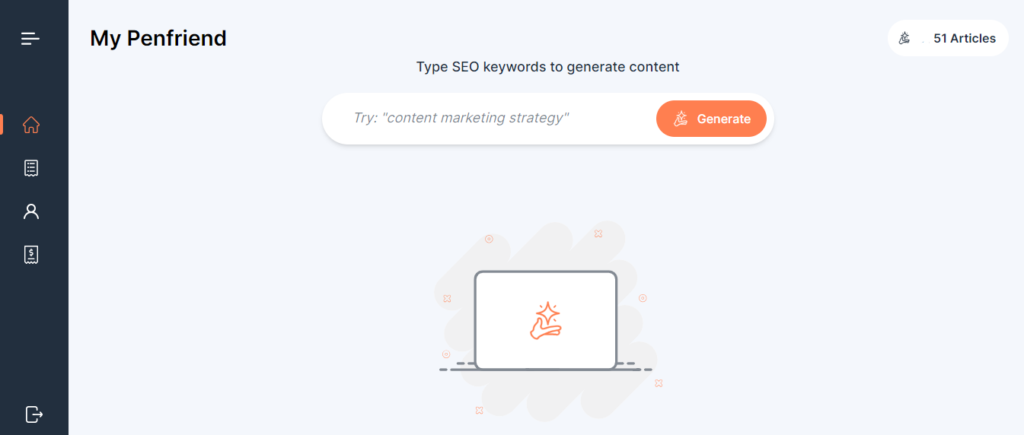
Entering Your Keyword or Content Topic
In the text box provided, type in the keyword or keyword phrase that you want to base your article around. This could be a broad topic like “Travel” or a more specific one like “eco-friendly travel.”
- Review the generated titles to ensure they align with your content strategy and target audience.
Step 2: Choose Your Article’s Title
Once Penfriend has generated the list of titles, it’s time to select the one that best fits your needs.
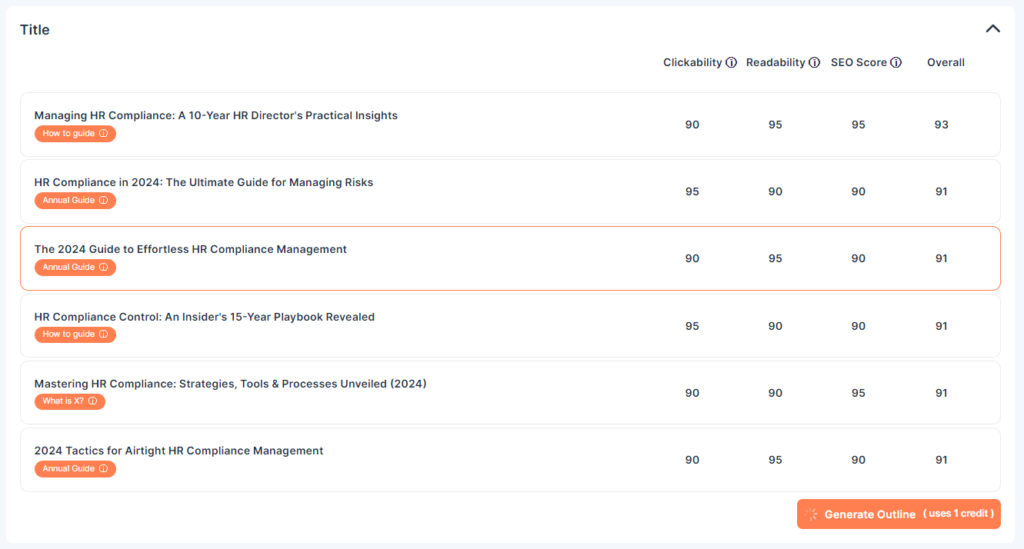
Penfriend’s Title Ranking Criteria
Penfriend ranks the generated titles based on four key criteria:
- Clickability – How likely is the title to attract clicks from potential readers?
- Relevance – Does the title accurately reflect the content of the article?
- Readability – Is the title easy to understand and engage with?
- SEO – Is the title optimized for search engines?
Penfriend considers these ranking factors and presents you with the top six titles from the original list of 20.
Selecting Your Title and Generating the Outline
Review the top six titles and choose the one that you feel will work best for your article. Once you’ve made your selection, click the “Generate Outline” button. Penfriend will then create a detailed outline for your article based on the chosen title.
Step 3: Penfriend Creates a Comprehensive Outline for an Article That Ranks
After you’ve selected your title, Penfriend gets to work crafting a detailed outline for your article. This outline is based on insights gathered from top-ranking articles on similar topics, ensuring that your content is structured for maximum impact and SEO performance.

Reviewing and Editing the Outline
Take some time to review the generated outline. If you’re satisfied with it as-is, you can move on to the next step. However, if you want to make changes, simply click the “Edit” button. This will allow you to add, remove, or rearrange sections as needed.
- Make sure that the outline aligns with your brand voice and covers all the key points you want to address in your article.
Generating Your Article
Once you’re happy with the outline, click the “Generate Article” button. Penfriend will then use the outline as a guide to craft the full article content.
Step 4: Review Your Generated Article
With the outline in place, Penfriend gets to work creating your article. The generated content is designed to provide immediate answers to reader questions, while also guiding them towards clear, actionable conclusions.
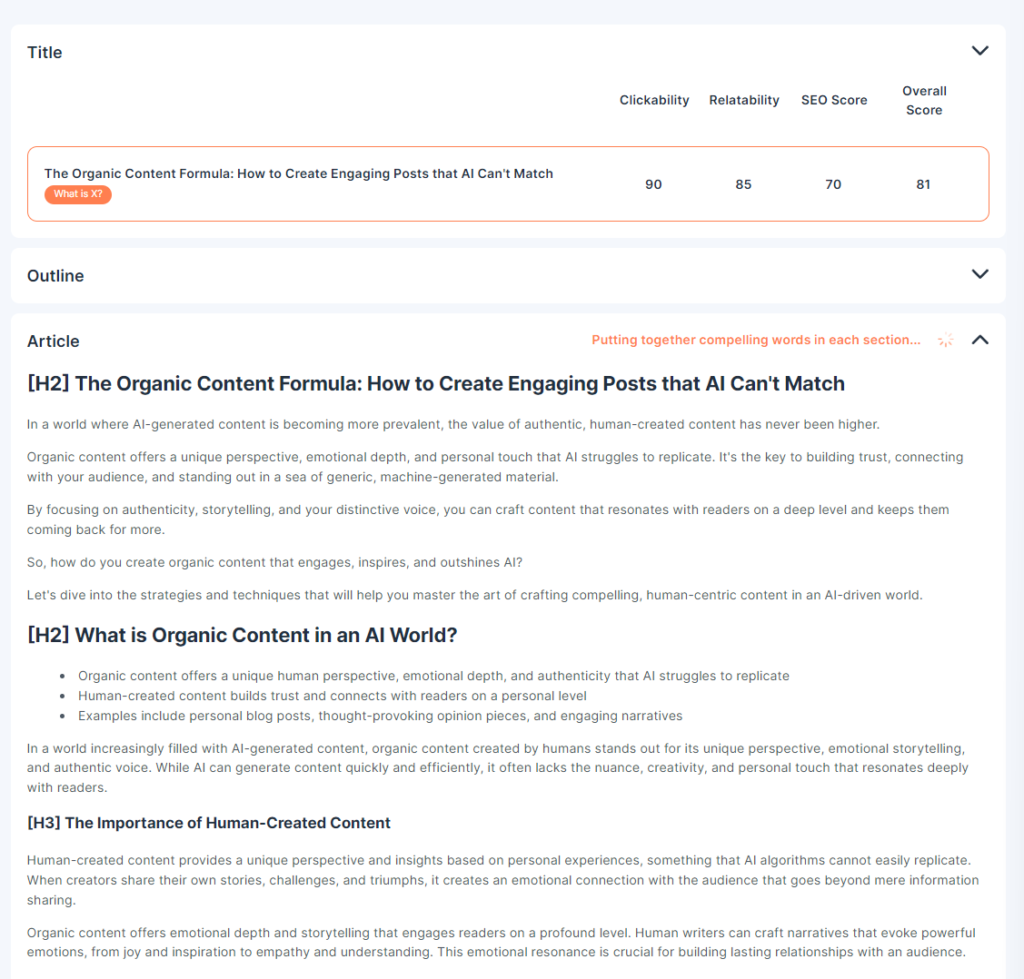
Penfriend’s strategic content structure
Penfriend structures your article to maximize engagement and drive results. This typically involves:
- Starting with a hook that immediately grabs the reader’s attention
- Providing quick answers to the main questions or pain points addressed by the article
- Elaborating on those answers with more detailed information and examples
- Concluding with a clear call-to-action or next steps for the reader
Move Your Generated Article
When you’re ready to review the generated article, simply click the “Copy” or “Copy without Formatting” button. This will allow you to easily paste the content into your preferred editing platform, such as Google Docs or WordPress.

Step 5: Editing your Article: Add a human touch
While Penfriend’s generated content is highly optimized and engaging, it’s important to add your own unique insights and perspective to truly make the article shine.
Enhancing the article with Penfriend’s suggestions
As you review the generated article, you’ll notice that Penfriend provides suggestions for additional content you can add. This might include:
- Relevant images or videos
- Customer testimonials or case studies
- Quotes from industry experts or thought leaders
- Links to related resources or articles

Consider incorporating these suggestions where appropriate to further enhance the value and credibility of your content.
Making the article uniquely YOURS
In addition to Penfriend’s suggestions, think about how you can infuse the article with your brand’s unique voice and perspective. This could involve:
- Adding anecdotes or examples from your own experience
- Referencing your company’s products or services (where relevant)
- Including quotes or insights from your team members or executives
The goal is to strike a balance between the SEO-optimized foundation provided by Penfriend and the human touch that makes your content truly stand out. Want to know exactly how to edit AI content to make it YOURS? I gotchu, read this blog from my co-founder, Tim Hanson.
Implementing internal linking for topical relevance
As you edit your article, don’t forget to include internal links to other relevant content on your site. This not only helps readers navigate to additional resources, but also signals to search engines that your site has topical authority on the subject matter.
When adding internal links, be sure to:
- Use descriptive anchor text that accurately reflects the content being linked to
- Link to articles that are closely related to the topic at hand
- Avoid overloading the article with too many internal links (aim for 2-4 per 1000 words)
- Review your internal links to ensure they’re relevant, descriptive, and not overly promotional.
By following these steps and adding your own unique enhancements, you’ll be well on your way to creating a high-performing article that drives traffic, engagement, and topical authority for your site.
Adapting to Changes in AI and Content Clustering Technology
AI and content clustering technologies are constantly evolving, and it’s essential to stay up-to-date with the latest developments. Regularly research and evaluate new tools and techniques that can enhance your content clustering approach.
As new AI capabilities emerge, consider how they can be integrated into your existing workflow. For example, advances in natural language processing (NLP) may enable more accurate and granular content analysis, while machine learning algorithms can help automate and scale your clustering efforts.
Continuously adapt your content clustering strategy to leverage these new technologies and stay ahead of the curve. By embracing change and innovation, you can ensure that your content remains relevant, engaging, and effective in the ever-evolving digital landscape.
Ready to Streamline Your Content Strategy?
Implementing an AI-powered content clustering tool is a smart move for any business looking to stay ahead of the curve in 2024 and beyond. With the right tool, you can:
- Identify content gaps and opportunities
- Create a cohesive content plan based on clustered topics
- Optimize your content for better search rankings and user engagement
And when you use Penfriend to create the content from your clustering exercise, you’ll:
- Get articles built on a proven content strategy
- Get high quality articles in minutes, not weeks
- We handle all the prompting for you
And experience results like this:

Take the First Step Towards Smarter Content Clustering
Don’t let manual keyword grouping hold you back. Sign up for a free trial of Keyword Insights today and experience the power of AI-driven content clustering firsthand.
What specific challenges do you face when it comes to organizing your website’s content? When you sign up to our Newsletter, you get a FREE Content Scaling Email Course packed with insane value.
Now, go blog it up!
Glossary of Terms:
- AI-Powered Content Clustering: Using artificial intelligence and algorithms to group related content together based on topics, keywords, and search intent.
- Content Clustering: Organizing website content into groups based on shared themes or keywords to improve SEO and user experience.
- Keyword: A word or phrase users type into search engines to find information.
- Machine Learning: A type of AI that allows software applications to become more accurate in predicting outcomes without being explicitly programmed to do so.
- Natural Language Processing (NLP): A branch of AI focused on enabling computers to understand, interpret, and generate human language.
- Semantic Analysis: The process of understanding the meaning and interpretation of words, sentences, and texts.
- SEO (Search Engine Optimization): The practice of optimizing websites and content to rank higher in search engine results pages (SERPs).
- Topical Authority: A measure of how well a website or content piece covers a particular topic, influencing search engine rankings and user trust.
- User Experience (UX): A user’s overall experience interacting with a website, product, or service, encompassing aspects like usability, accessibility, and satisfaction.

